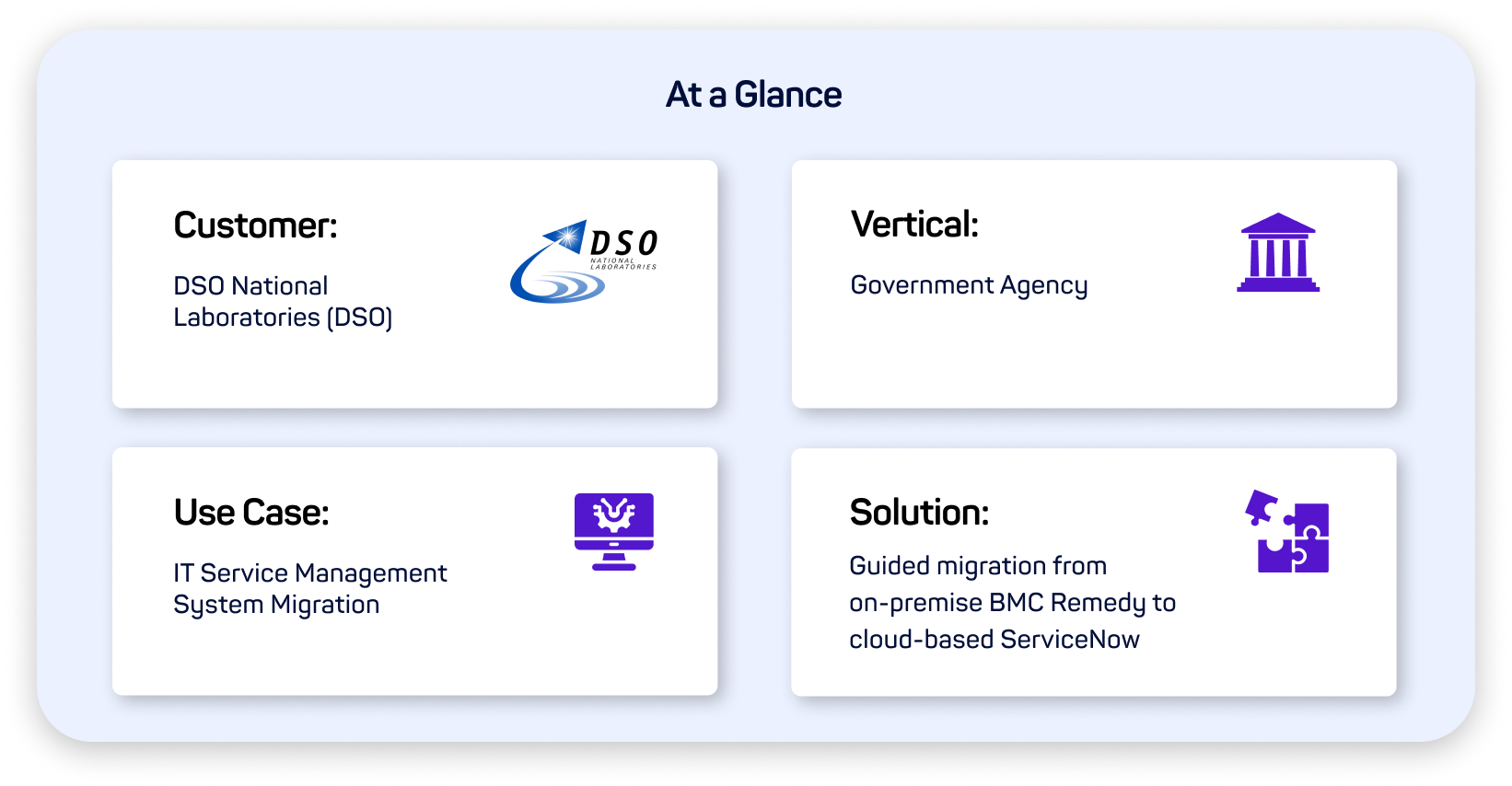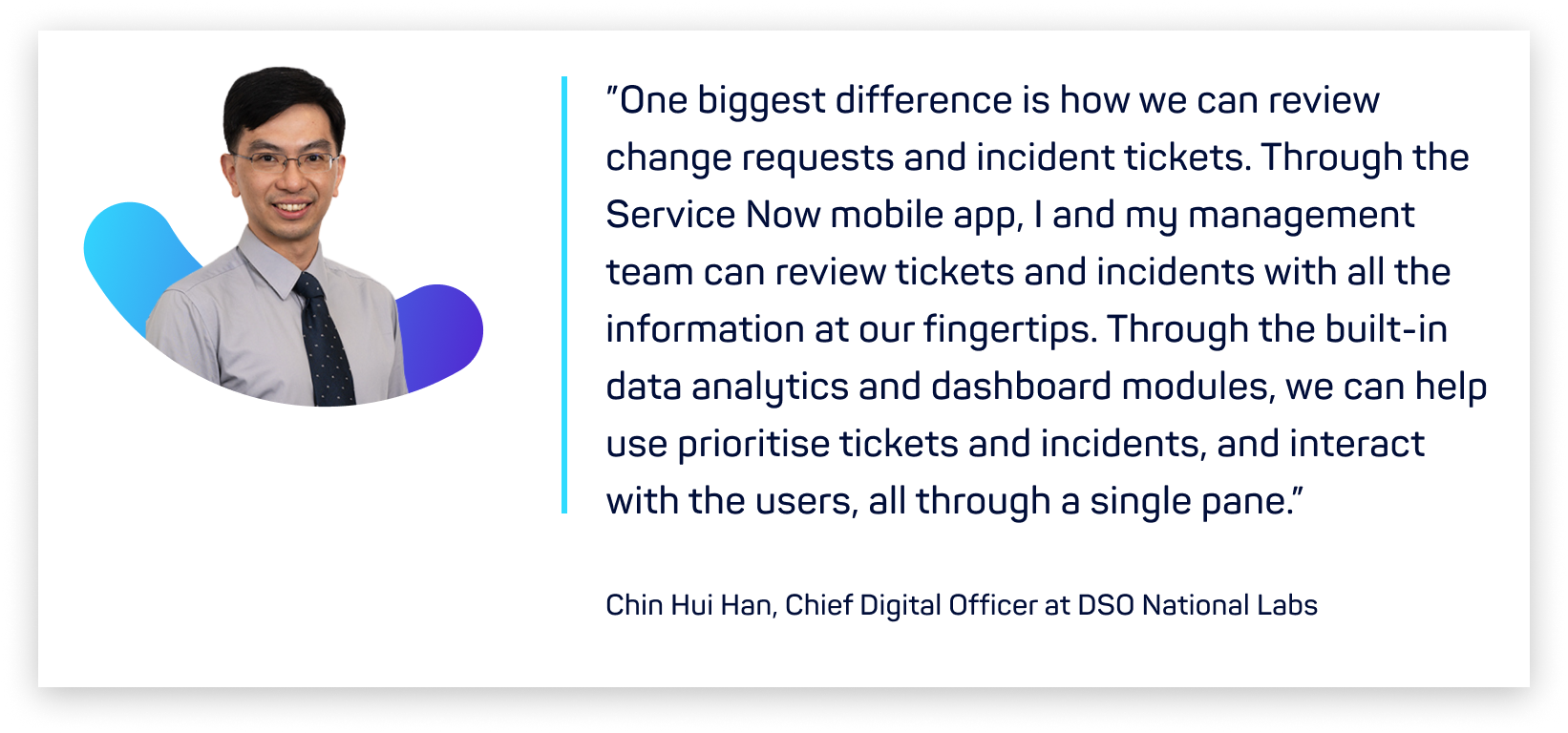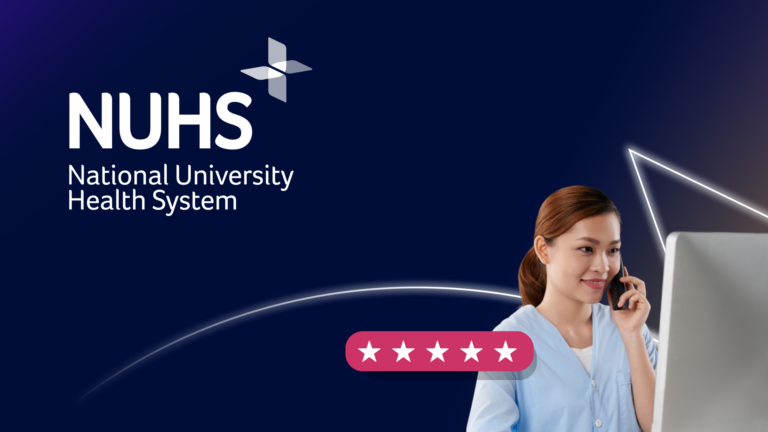Discover how Activeo APAC helped NUHS integrate 4 separate call centres into one powerful omnichannel platform with self-serve capabilities.
DSO National Laboratories (DSO), Singapore’s premier defence research and development (R&D) entity, plays a crucial role in creating technology-driven solutions to bolster the nation’s security apparatus. Founded in 1972 and transforming from a modest team of three to over 1,600 dedicated research scientists and engineers, DSO operates across diverse sectors including land, sea, air, space, and cyberspace, underlining its commitment to safeguarding Singapore’s national interests.
At DSO, the Digital Division is pivotal in developing and operating enterprise IT networks, applications, and services, not just for their team but for the entire organisation.
They also oversee central R&D digital capabilities such as computer clusters.
This pivotal role, however, wasn’t without its challenges, especially when it came to dealing with legacy systems.
The problem with a legacy IT Service Management (ITSM) solution
For years, the Digital Division was using an on-premise version of BMC Remedy for IT Service Management (ITSM). It served their functional requirements for processes like change management.
However, it was an outdated, rigid, on-premise solution that lacked integration with their other services, such as Microsoft 365 or Outlook email, as well as customisability.
Also, there was no mobile app that could be deployed with the version of BMC Remedy that they had. It lacked data analytics capabilities, and there was no easily customisable management dashboard available. In fact, both the agent and admin User Interfaces (UI) were not very user-friendly.
Our version of BMC Remedy also lacked an easily customisable management dashboard. As a result, we would need to output the outstanding tickets into an Excel sheet for our weekly review of the change requests, service requests and IT incidents.
These problems had considerable impact on DSO’s operations, including:
Reduced Productivity: The rigidity of the platform meant a lot of time-consuming configurations and even more complex customisations which led to longer setup times for the team.
Decreased Operational Efficiency: Because the UI was not user-friendly, both agents and administrators spent unnecessary amounts of time navigating the platform, which significantly decreased overall operational efficiency. The non-intuitive UI also meant that additional training for both agents and administrators was needed to familiarise themselves with the system. The time and resources spent on this additional training could have been better utilised elsewhere.
Reviewing DSO’s ITSM Requirements

Let’s review what DSO’s Digital Division needed:
- They needed seamless integration with other services such as Microsoft 365 and Outlook email, and more flexible configuration options
- They required an ITSM tool that natively integrates with a ready-to-deploy mobile app, offering a seamlessly connected experience straight out-of-the-box
- The team desired enhanced data analytics capabilities to prioritise incidents or service requests more effectively
- They wanted an easily customisable management dashboard with more user-friendly UI for better visibility and control
On weighing all their requirements, Hui Han realised that DSO needed a modern, cloud-based ITSM deployment paired with an experienced provider with the right expertise to help them.
The problem was finding a reliable partner who understood their unique security considerations and operating environment who could facilitate a smooth transition.
Enter Activeo APAC.
Migrating from on-premise BMC Remedy to cloud-based ServiceNow

Activeo APAC, already known to DSO through a previous engagement was entrusted with this massive ServiceNow migration project.
Why?
Because Activeo APAC had already built strong rapport with DSO and had demonstrated a more nuanced understanding of the requirements.
As the Activeo team understood well our security considerations and unique operating environment, choosing Activeo for the ServiceNow project was a clear choice.
Moreover, DSO appreciated Activeo APAC’s decades of experience in digital workplace and IT business consulting.
The project kicked off with a pre-migration phase, where Activeo’s consultants and subject matter experts reviewed the existing BMC Remedy functionality and charted the migration path to ServiceNow. In this way, both Hui Han’s and Activeo APAC’s teams were clear on the requirements, and there was minimal delay in the actual implementation.
The result?
A smooth transition to ServiceNow in less than six months, coinciding with their migration to Microsoft 365.
Empowering organisation-wide operational efficiency through technology

With its migration to ServiceNow, DSO didn’t just adopt a new platform.
They ignited a spark of transformation that would fundamentally reshape the organisational landscape and the ways in which they operated.
The best part?
These transformative results weren’t limited to a specific department or area. They permeated throughout the organisation in several ways.
In other words, their team could now review tickets and incidents anywhere, at any time.
Furthermore, the shift to the cloud-based platform ServiceNow significantly reduced the number of on-premise servers needed while enhancing IT service support reliability.
Cloud-based ITSM deployment – a gateway to agile business practices
The potential for organisation-wide digital transformation with an Activeo APAC-supported ITSM deployment is massive, as exemplified by DSO’s experience.
It goes beyond just facilitating day-to-day operations – it’s about propelling the organisation into a future where they are more responsive, resilient, and cost-effective.
Here are just a few potential benefits we believe DSO will experience:
- A reduction in on-premise servers can potentially lead to significant cost savings. These savings come from reduced spending on server maintenance, updates, physical storage, and energy usage. The cost-effectiveness of cloud services like ServiceNow also typically includes scalability, allowing for flexible pricing models depending on usage.
- Cloud-based ITSM platforms provide more robust disaster recovery and business continuity capabilities. This means that even in the event of a physical disaster affecting the business location, DSO’s operations can continue without significant disruption.
- Improved agility and speed: DSO Digital Division’s transition to the cloud allows for quicker implementation of new applications and services, providing the organisation with greater agility and speed in responding to changing needs or market conditions.
Using ServiceNow to spearhead digital transformation projections
Buoyed by the success of the ServiceNow migration, DSO plans to extend ServiceNow’s use as part of their IT Service delivery transformation, aiming to offer users a seamless IT service experience.
ServiceNow’s ITSM module will also be a key feature of their IT Concierge revamp, with plans for users to have access to IT services on their mobile devices.
In addition, they are exploring the use of ServiceNow for other corporate processes, such as the onboarding of new staff. As they forge ahead, they’re looking forward to partnering with Activeo APAC for future digitalisation projects.
 Ken Sng
Ken Sng 


 Nora Huin
Nora Huin 
 Rosaline Oh
Rosaline Oh 
 Angie Yeo
Angie Yeo